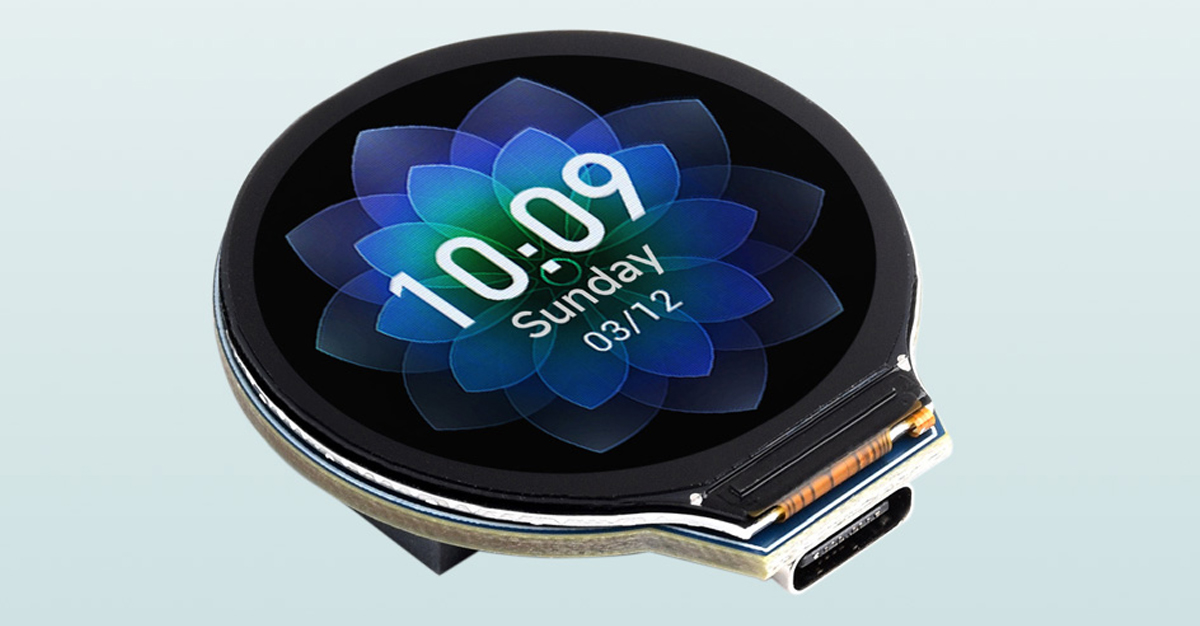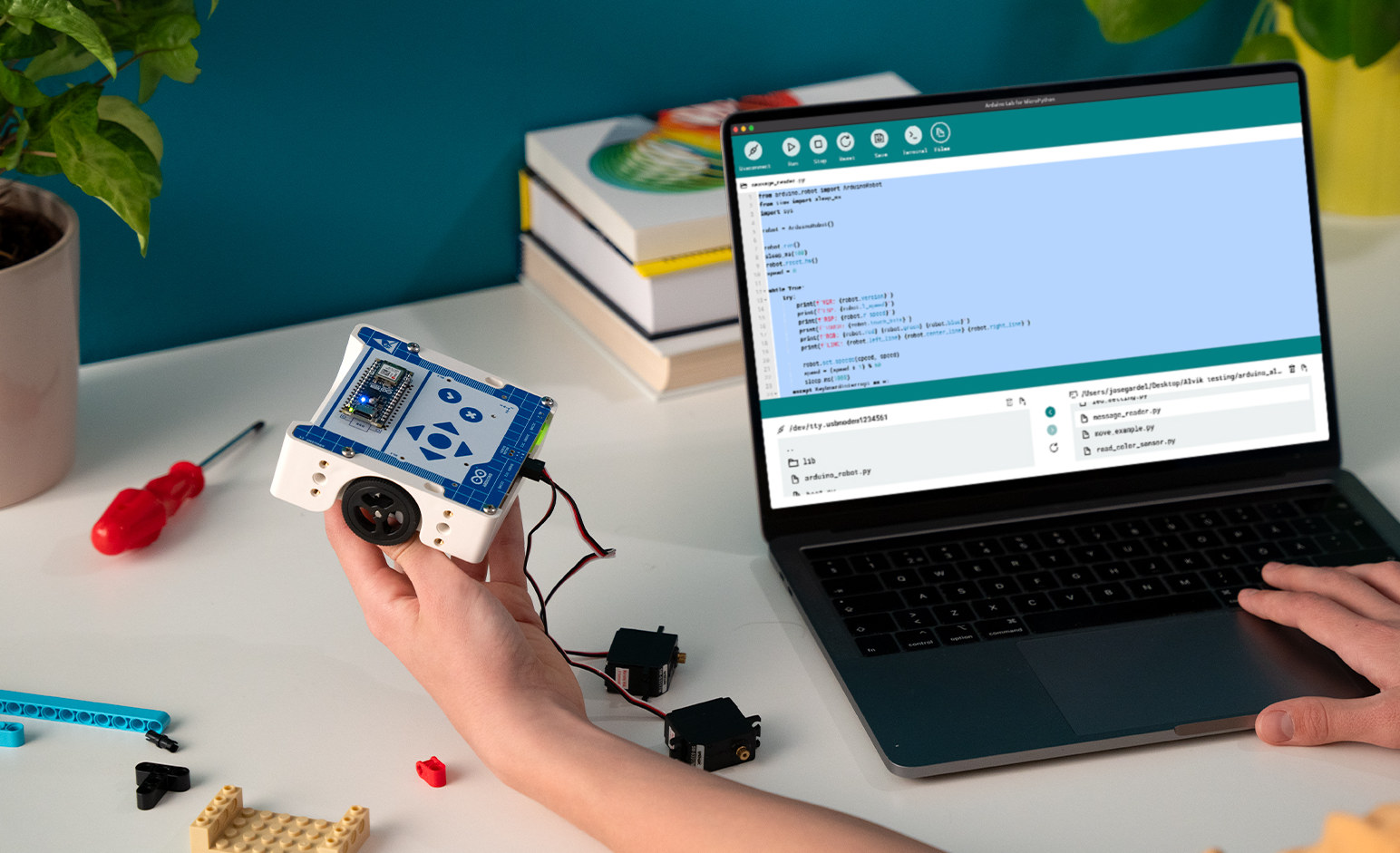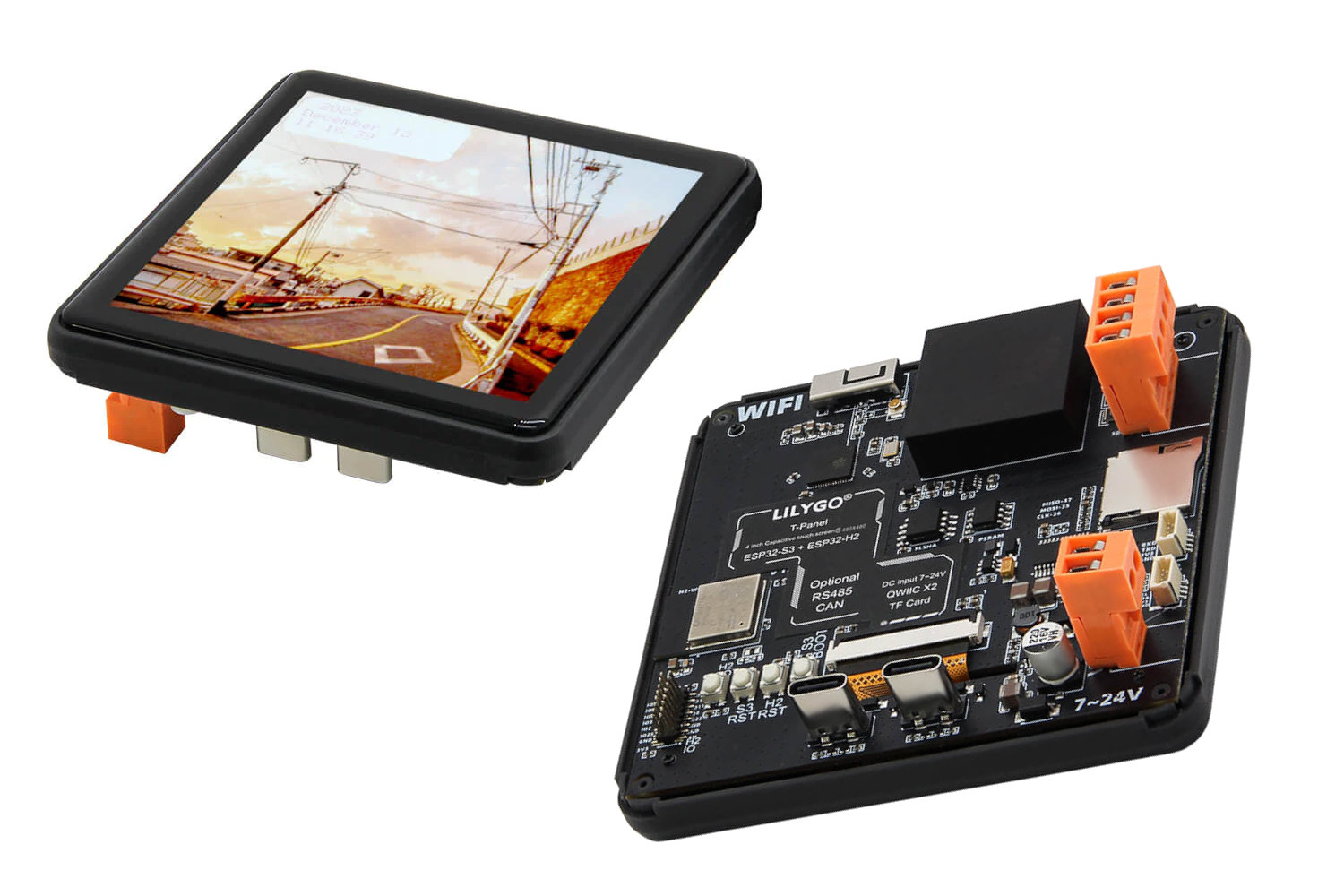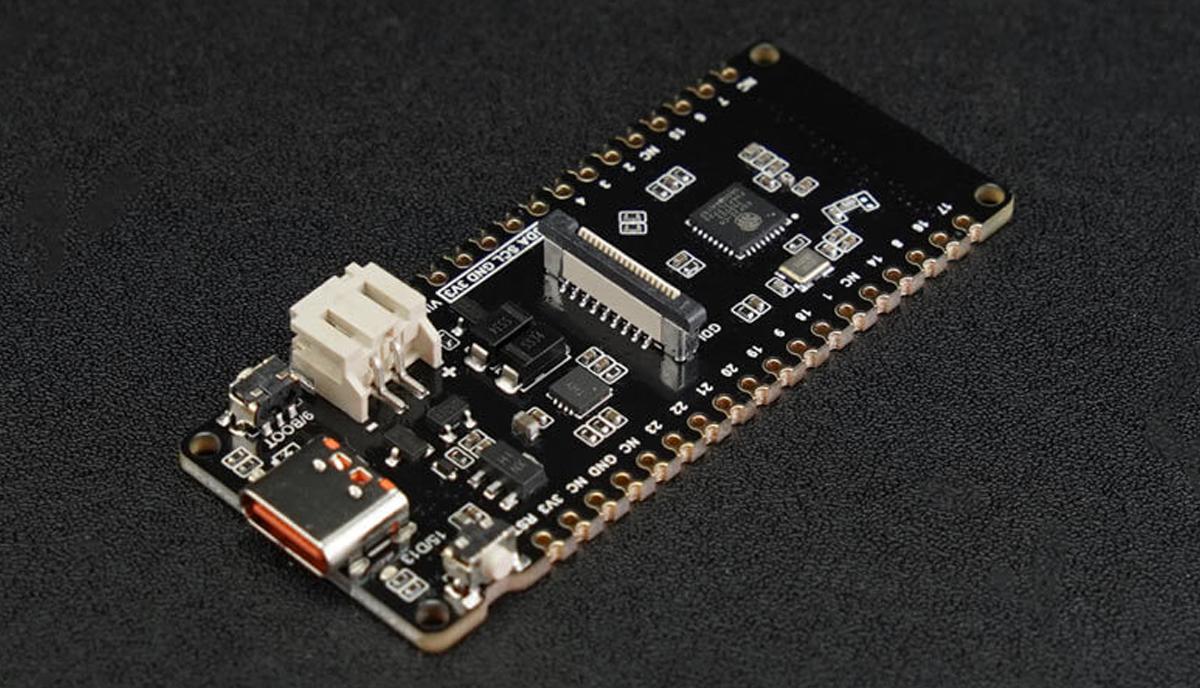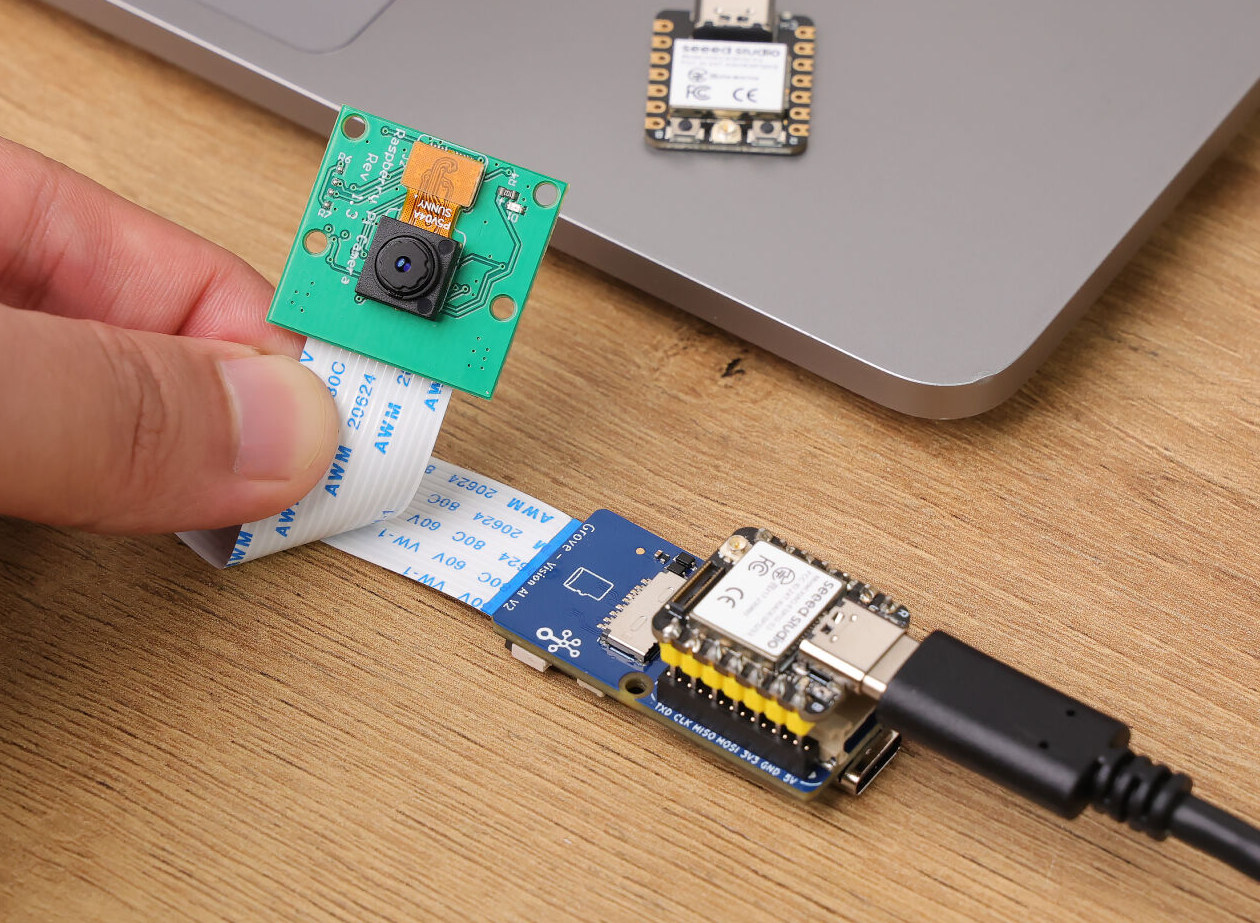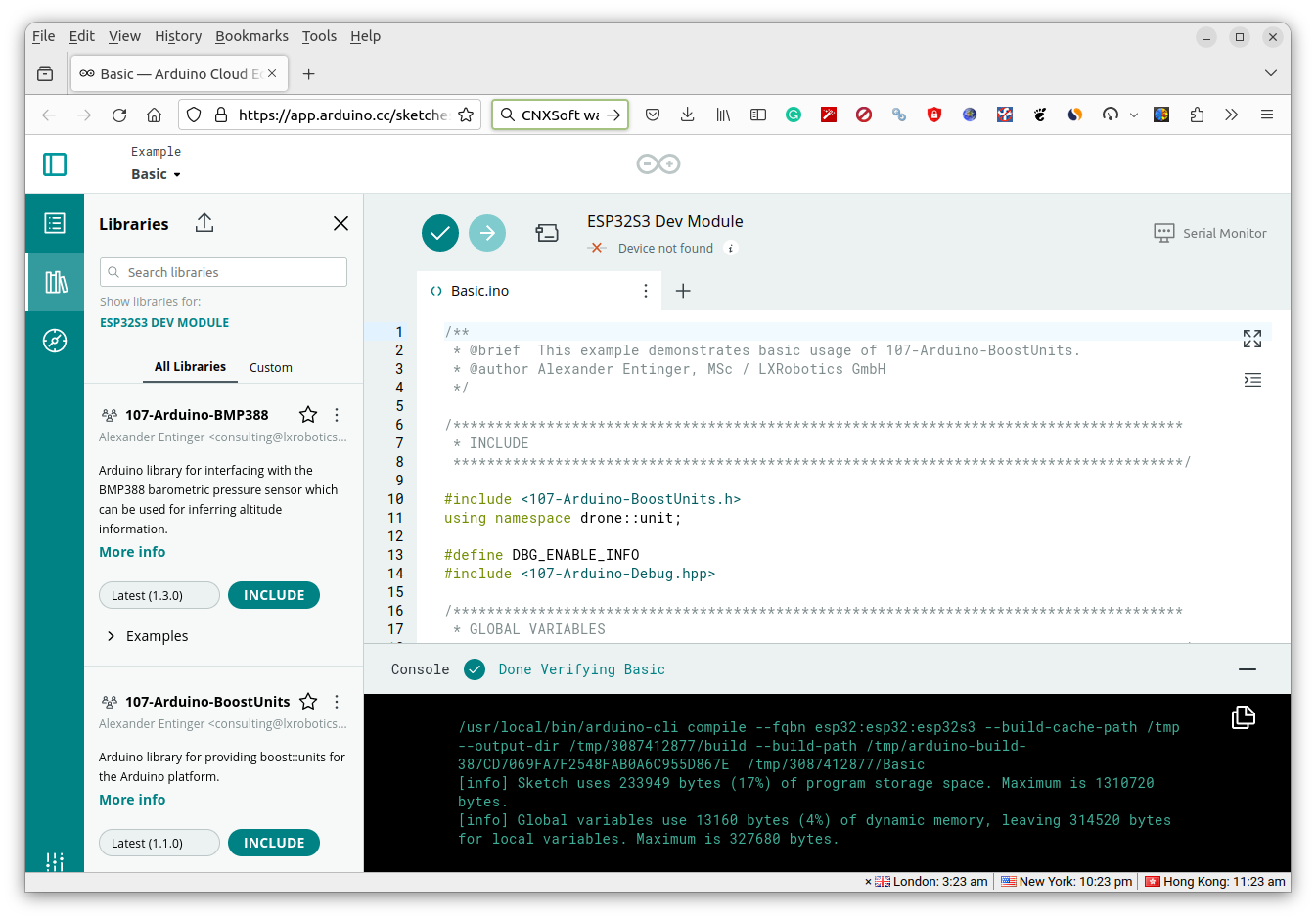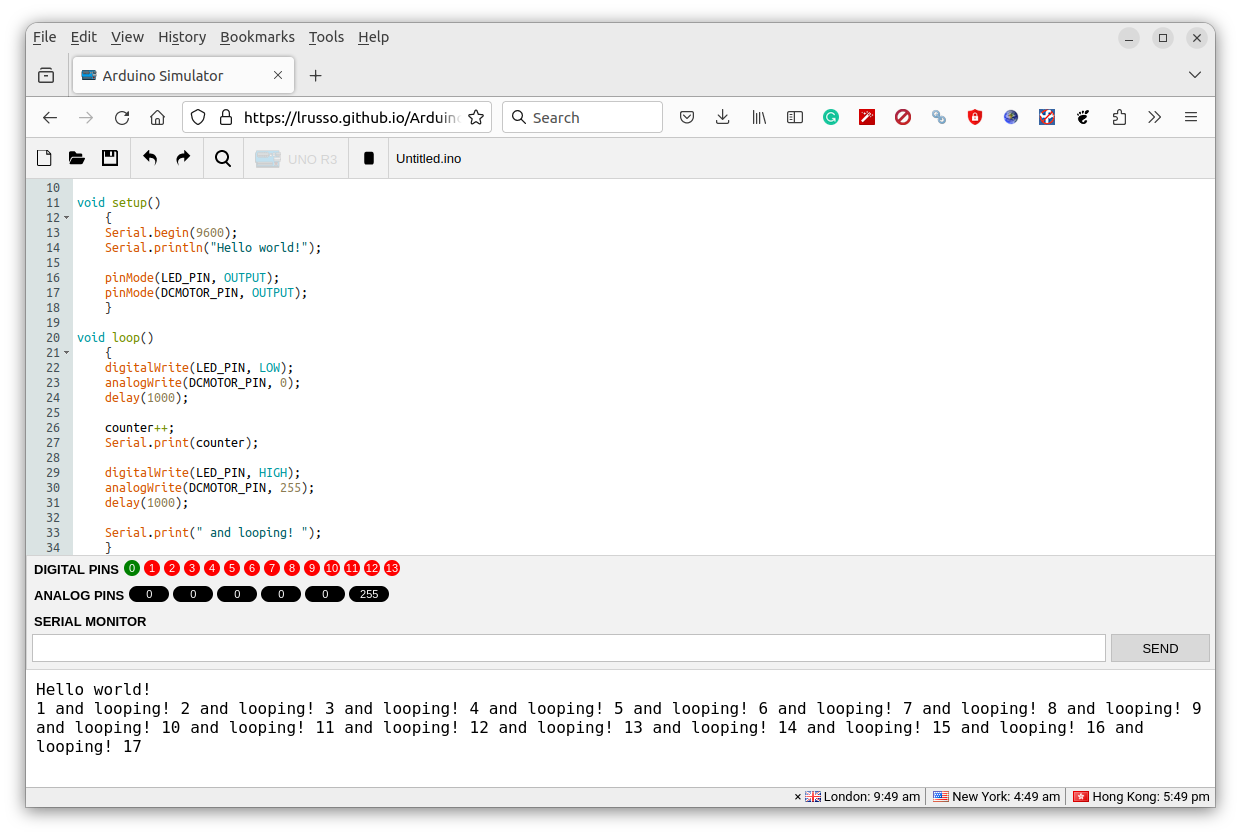The Waveshare “ESP32-S3-LCD-1.28” is an ESP32-S3-based display board featuring a 1.28-inch round LCD screen with a 240×240 resolution, driven by the GC9A01 display driver chip. It also includes a Li-ion battery charger, a QMI8658 6-axis IMU (for motion tracking), a USB Type-C connector, and wireless capabilities. This board is quite similar to others like the Lilygo T-RGB, Round Display for XIAO, ESP32-S3 Round SPI boards. However, it’s thinner and more affordable. Waveshare ESP32-S3-LCD-1.28 development board specifications: Wireless MCU – ESP32-S3 Xtensa 32-bit LX7 dual-core, up to 240MHz frequency. Display: 1.28-inch round IPS LCD. Resolution – 240×240 pixels. 65K color. Display Chip – GC9A01A. IMU Parameters: Sensor – QMI8658 Accelerometer resolution – 16-bit; Range (Optional): ±2, ±4, ±8, ±16g. Gyroscope resolution – 16 bits; Range (Optional) – ±16, ±32, ±64, ±128, ±256, ±512, ±1024, ±2048°/sec. Memory: Built-in 512KB SRAM. 384KB ROM. Onboard 2MB PSRAM. External 16MB Flash memory (W25Q128JVSIQ). Wireless Connectivity: […]
Arduino Alvik is a 3-wheel robot designed for STEAM education
Arduino Education’s Arduino Alvik is an upcoming 3-wheel educational robot that was just unveiled at the Bett 2024 show in London and designed to teach robotics, programming, and other STEAM subjects. The robot is based on an Arduino Nano ESP32 board and will come with a set of nineteen lessons designed by Arduino Education’s team in collaboration with teachers so that students can learn the basics of IoT, get started with MicroPython, and get themselves familiar with various physics and engineering concepts. The company has yet to provide the full specifications for the Alvik robot, but here’s what we know at this stage: Mainboard – Arduino Nano ESP32 2x wheels plus 1x ball wheel Sensors – “High-quality sensors” that include a ToF ranging sensor, line-following sensors, a 6-axis accelerometer & gyroscope, a proximity sensor, and color sensors. Expansion 2x Grove I2C connectors 2x Qwiic connectors 6-pin servo motor header for […]
LILYGO T-Panel – A 4-inch HMI display and WiFi, BLE, and 802.15.4 gateway based on ESP32-S3 and ESP32-H2
LILYGO T-Panel is both a 4-inch HMI display and IoT gateway based on ESP32-S3 WiFi 4 and Bluetooth LE 5 microcontroller and an ESP32-H2 module with Bluetooth LE 5 and an 802.15.4 radio for Zigbee, Thread, and Matter connectivity. Last year, Espressif introduced the ESP-Thread Board Router/Zigbee gateway board with ESP32-S3 and ESP32-H2 to show how both chips could be combined to create IoT gateways. But I don’t think I had seen a company design a product based on both ESP32-S3 and ESP32-H2 until I saw the T-Panel which also includes an RS485 interface and Qwiic expansion connectors for good measure. T-Panel specifications: Wireless chips/modules Wireless SoC – ESP32-S3R8 dual-core Tensilica LX7 microcontroller @ 240 MHz 2.4 GHz 802.11n WiFi 4 and Bluetooth 5.0 LE connectivity Memory – 8MB PSRAM Wireless module – ESP32-H2-MINI-1 module MCU – Espressif Systems ESP32-H2 32-bit RISC-V microcontroller at up to 96 MHz with 320 […]
This new ESP32-C6-based IoT development board supports solar battery charging
DFRobot’s FireBeetle 2 ESP32-C6 is an IoT Development Board with 802.11ax (now called Wi-Fi 6), Bluetooth 5, Zigbee 3.0, Thread 1.3, and flexible power options including USB Type-C, 5V DC, and a CN3165 Lithium Ion battery charger for solar-powered systems. This isn’t the first solar-based board we’ve covered. We’ve also explored boards like Conexio Stratus, Wisblock Kit 2, and RAK8211-NB iTracker along with other solar-powered devices such as solar-powered laptops, solar-powered headphones, and even a solar-based power supply. FireBeetle 2 ESP32-C6 IoT Development Board Specifications: Processor – ESP32-C6 RISC-V single-core, 160 MHz Memory SRAM – 512KB ROM – 320KB Flash – 4MB RTC SRAM – 16KB USB – USB 2.0 CDC Wi-Fi Protocols – IEEE 802.11b/g/n, IEEE 802.11ax (20 MHz-only non-AP mode) Bandwidth – Supports 20 MHz and 40 MHz at 2.4 GHz Modes – Station, SoftAP, SoftAP+Station Frequency – 2.4GHz Frame Aggregation – TX/RX A-MPDU, TX/RX A-MSDU Bluetooth Protocol […]
$16 Grove Vision AI V2 module features WiseEye2 HX6538 Arm Cortex-M55 & Ethos-U55 AI microcontroller
Seeed Studio’s Grove Vision AI V2 module is based on the HiMax WiseEye2 HX6538 dual-core Cortex-M55 AI microcontroller with an Arm Ethos-U55 microNPU and features a MIPI CSI connector for an OV5647 camera. It is designed for AI computer vision applications using TensorFlow and PyTorch frameworks and connects to hosts such as Raspberry Pi SBCs, ESP32 IoT boards, Arduino, and other maker boards over I2C. We tested the previous generation Grove Vision AI module based on the 400 MHz HX6537-A DSP-based AI accelerator using the SenseCAP K1100 sensor prototype kit with LoRaWAN connectivity, and managed to have the kit perform face detection and send the data over LoRaWAN. The Grove Vision AI V2 builds on that but with a modern Arm MCU core and more powerful AI accelerator that can run models such as Mobilenet V1/V2, Efficientnet-lite, and Yolo v5 & v8 using the SenseCraft low-code/no-code platform. Grove Vision AI […]
Arduino Cloud Editor update brings the classic Arduino IDE experience to your web browser
Arduino has updated the Arduino Cloud Editor – which started as Arduino Create several years ago – to bring the web-based code editor closer to the appearance and functionalities of the “classic” Arduino 2.0 IDE. Arduino says the Cloud Editor simplifies the getting started process without having to go through the setups or maintenance required by the Arduino IDE installed on your computer and you can access your sketches easily from the cloud wherever you are. Considering the Arduino Cloud Editor has been around for a few years what has changed exactly? First, the Cloud Editor and the Arduino IDE now have a unified design (sort of), although the way the company frames it is a bit abstract: Traditionally, Arduino Cloud had two separate editors: an embedded simple one and the full editor. Users have long awaited a unified editor that gets the best of each one. The new Cloud […]
ArduinoSimulator is an open-source Arduino Simulator that runs in your web browser
Leonardo Russo’s ArduinoSimulator is an open-source Arduino Simulator written in JavaScript that runs code directly in your web browser and shows the serial output and digital/analog pins status for various Arduino boards namely Arduino UNO R3, MEGA1280, MEGA2560, and NANO V3. We previously covered the Wokwi simulator for ESP32. Arduino, and Raspberry Pi RP2040 that’s a great little tool for educators to emulate circuits and run code right in a web browser, and it even supports the ESP32-P4 wireless MCU although it’s yet to be released. While the simulators are written in JavaScript and open-source, the tool itself is not, and for instance, you can’t run a self-hosted instance of Wokwi or use it offline. The ArduinoSimulator is fully open-source and runs entirely from a web browser. It’s not quite as complex and full-featured as Wokwi, as you can’t build your own circuits, but you still have an area to […]
Arduino and Silicon Labs collaborate to bring Matter to Arduino boards and IDE
Arduino and Silicon Labs have joined hands to both bring Matter-compatible SiLabs wireless microcontrollers to the Arduino IDE and then design an upcoming Arduino Nano based on SiLabs MGM240 Arm Cortex-M33 microcontroller with Matter, Thread, Zigbee, and Bluetooth LE protocols. Available now: Arduino Core for Silicon Labs devices The first phase of the collaboration involves getting Arduino core for Silicon Labs development boards so that compatible devices can be programmed in the IDE. The good news is that it’s available now and works with four existing wireless boards: SparkFun Thing Plus Matter MGM240P based on MGM240PB32VNA Arm Cortex-M33 MCU with Matter, Thread, Zigbee 3.0, and Bluetooth 5.3 LE connectivity SiLabs xG27 Dev Kit based on EFR32BG27C140F768IM40 Arm Cortex-M33 MCU with Bluetooth LE 5.3, Bluetooth Mesh, Proprietary 2.4 GHz connectivity SiLabs xG24 Explorer Kit based on EFR32MG24B210F1536IM48 Arm Cortex-M33 MCU with Bluetooth 5.3 LE, Bluetooth Mesh, Matter, OpenThread, Zigbee, Proprietary 2.4 […]


